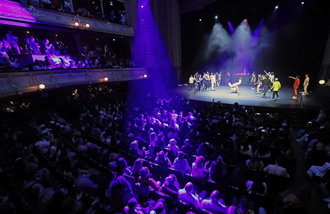Clouds over normalization ROK-U.S. joint military drill
Clouds over normalization ROK-U.S. joint military drill
Posted May. 28, 2021 07:30,
Updated May. 28, 2021 07:30
South Korean President Moon Jae-in said at a luncheon with five political party representatives on Wednesday that he finds it difficult to see large-scale R.O.K.-U.S. joint military drills take place amid the COVID-19 pandemic. “Conditions may not allow the two nations’ troops to join face-to-face trainings in large numbers for some time,” he said. “We will carefully determine when, how and to what level a joint military exercise happens.” The U.S. Department of Defense has put an emphasis on a high level of preparedness based on joint military trainings, adding that decisions on the scale, range and timing of a military drill with Seoul will be made bilaterally.
President Moon’s remarks may intend to say that a reduced level of R.O.K.-U.S. joint military drills, which have been maintained since 2018, may inevitably continue with the resumption of dialogue between the two Koreas; and Washington and Pyongyang in the bigger picture. Since 2018, Seoul and Washington have cut back on their joint military drills significantly due to the negotiations with Pyongyang and the COVID-19 outbreak. Some expect that the next joint drill scheduled in August will get back on the right track as U.S. President Joe Biden released a plan to supply COVID-19 vaccines for 555,000 South Korean troops during the recent summit talk with his South Korean counterpart. However, President Moon drew the line on the grounds that the current status quo requires further consideration about many factors at work.
Since the front for dialogue opened up back in 2018, the suspension of large-scale R.O.K.-U.S. military drills has been a bargaining chip in exchange for Pyongyang’s step backward from nuclear and long-range ballistic missile testing, both of which have been linked to each other. However, North Korea’s refusal has driven the dialogue front to a standstill for a long time with Pyongyang’s continued attempts to launch short-range missiles being made. In the meantime, since the COVID-19 pandemic increased, the R.O.K.-U.S. joint military drills have skipped field training exercises but decreased to command post training. This only makes it natural that the U.S. military expresses continued concern about a lax level of preparedness.
As Pyongyang is hell-bent on finding cause for provocation with a growing level of threat, a large-scale joint military drill between Seoul and Washington may serve as a pretext to perform massive nuclear and missile threats. With it mind, the two allies may have to adjust the scale of their joint drills to the degree that allows them to keep Pyongyang in control. Nevertheless, it may be a useless strategy to let the North buy time in a situation where they only reach out to it with appeasement while Pyongyang refuses to grab their hand. What’s more, if Seoul and Washington hastily take a step backward by giving up on a joint military drill scheduled three months later, the North will likely receive the wrong message.







